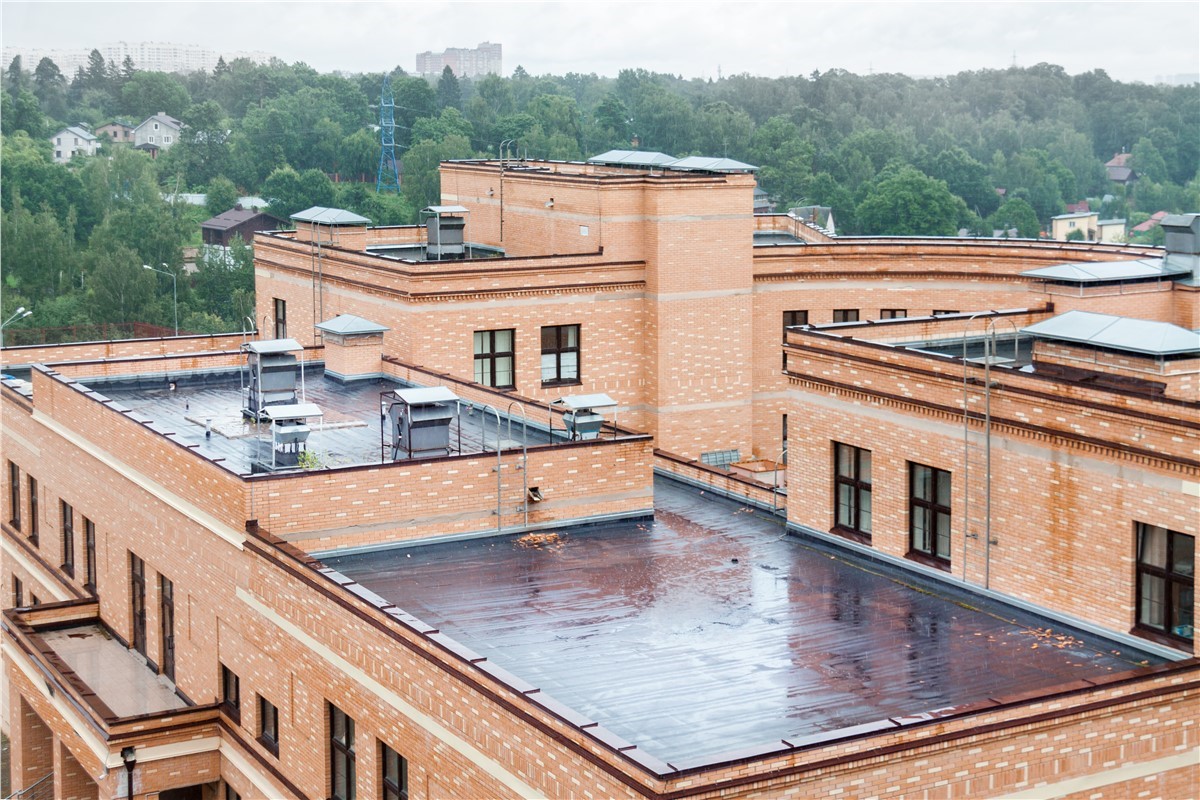The average hailstorm lasts only five minutes, but the hail damage does to property totals about $1 billion a year, according to the National Weather Service. When hail hits, it can damage the roof or covering of your home as well as other personal property, which is why it’s important to schedule a professional roof inspection after each storm to assess any damage!
Generally, hail damage on a roof can be seen as indentations and/or fractures on the shingle’s surface but can be difficult to see from the ground. Hailstones vary in size, shape, and hardness and can create a random pattern of dents or depressions. If this is not evident, look for indentations on metal flashings, siding, chimney caps, or even skylight flashings. After some time, clusters of granules may come off (at the point of impact) in a random pattern and expose the asphalt.
The most common types of hail damage to a roof include:
- Granule loss at points of impact, which may be accompanied by surface depression. Loss of mineral granules as an immediate or gradual consequence of storm damage can lead to the asphalt coating being directly exposed to the elements. This may lead to accelerated aging of the shingle. Therefore, granule loss is NOT just cosmetic damage, and “sugaring” — the process of adding loose granules to damaged shingles with asphalt cement — is not a permanent solution.
- Cracks in the granule-asphalt surfacing, which may radiate outward from points of impact. Cracks may be present especially if high winds blew the shingles back.
- Exposed fiberglass mat, where hail shattered the granule-asphalt surfacing causing it to break away from the fiberglass mat.
- Fractured fiberglass mat, which may or may not be immediately visible. A fractured mat may result in tears radiating out from the points of impact. Furthermore, hidden damage to the mat may later develop into cracks and tears in time as the shingles age.
- Loosening of the self-seal strip. This damage may or may not be immediately visible and may weaken the seal integrity, creating the possibility of future shingle blow-off.
How Soon After A Storm Should You Get An Inspection?
After a hail storm, check the exterior of your home for any obvious signs of damage including dents or cracks in your gutters. Should you see signs of damage, call for a professional inspection right away. Spotting hail damage on roof shingles is much more difficult. In most cases, hail damage can be impossible to see from the ground level of your home. However, we DO NOT recommend inspecting your own roof for damage. Falls from roofs account for 1/3 of all construction related fatalities. The safest and easiest option for you as a homeowner is to schedule an inspection with a professional roofing company, like Millersberg Construction.
Think You Might Have Roof Damage?
Unpredictable storms create unpredictable problems. That’s why it’s important to choose the right professional to inspect the integrity of your home after a storm. It’s important to find someone who is local, properly certified, efficient, courteous, and available to complete your warranty work. All of which you’ll find working with Millersberg Construction.Contact us today at 507-301-3626 or use our online form to request a free, no-obligation inspection!
Tags
Subscribe to Millersberg Construction's Blog


Comments
Thanks for helping me learn about the common types of hail damage. Last year, I remember that we had a heavy hailstorm here in our area, which resulted in plenty of damaged roofs in the household. In case this happens again, as early as now, I'd like to find a roofer to fix it for me. Since hail can create can create a random pattern of dents, it may cause cracks on the shingles. Hopefully, I can find a reliable company that I can call to when this happens.